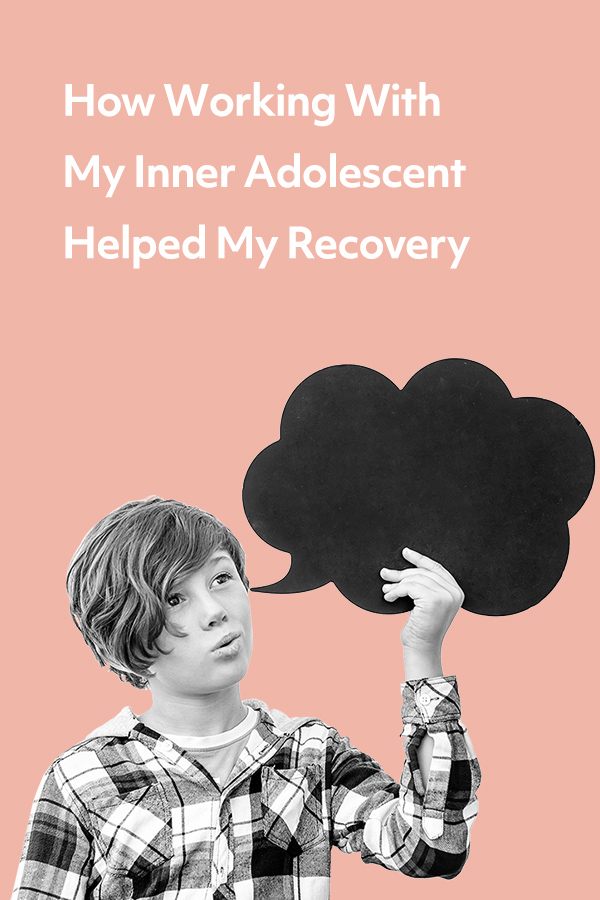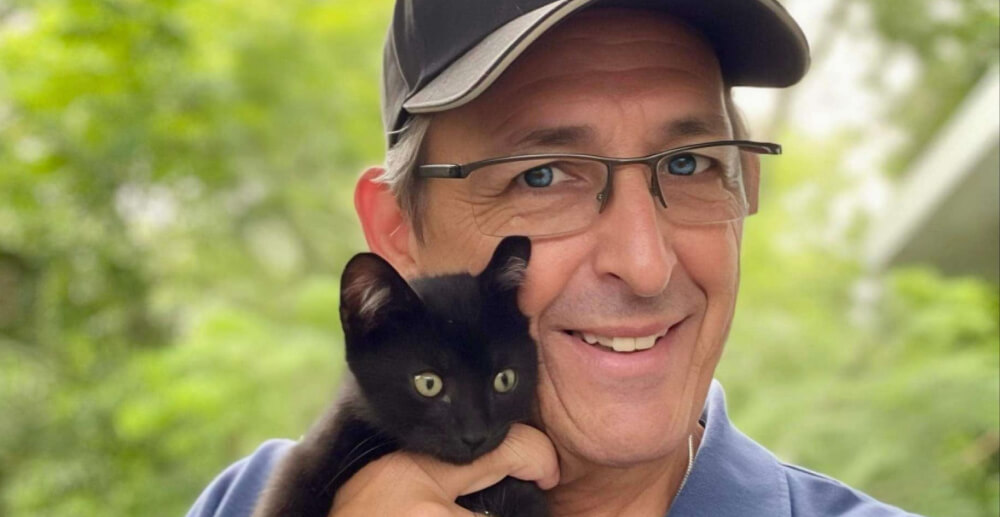Delving into parts work helped me resolve some self-sabotaging behaviors and start to have fun again.
In the space between Delta and Omicron, stand-up comedy was happening again, yet I couldn’t get myself to show up to do it. Performing stand-up is one of my favorite things in life—so what was going on?
I kept planning to show up and bailing at the last minute. I called a sober friend to talk about it and they said, “Well, why don’t you just quit then?” But I didn’t want to.
Listening to my inner adolescent helped me uncover hidden fears
I keep my junior year class photo on a bulletin board near my desk. Looking into my younger self’s eyes, I asked, “What is going on with us?”
A voice answered back, “You suck the joy out of everything, so we are not doing it.”
The voice was my inner adolescent. The concept of the inner child is firmly lodged in the zeitgeist, but the inner adolescent—the one whom, for many of us, holds a lot of trauma—is, just like us as adolescents, largely forgotten about.
When Covid hit I had just achieved my first year of continuous sobriety. As I sat in communion with my inner adolescent, I learned that she was afraid that we’d act the way we had in our first year: judgmental, negative, unable to be a worker amongst workers. If I was on a ‘good’ show, I felt like I didn’t measure up. If I was on a ‘bad’ show, I was sad that this was where I was at in my career and why wasn’t I getting what I deserved?
My inner adolescent just wanted to have fun—a thing I was (at that time) only permitting alone on the couch with my pets and phone.
By ignoring parts of ourselves—and we all are fragmented in this way—we let those parts run the show without understanding why. My inner adolescent is most likely a factor in why it took me so many years to get sober. She just wants to have fun. Once I accepted this, however, I could work with it.
Acting on the insights I’d gained opened doors to greater joy
“Okay,” I said to her, “you don’t get to be in charge of our career anymore. You can be in charge of our hair (it’s pink now), the music we listen to (Taylor Swift on repeat), and even how we dress and who we spend our time with. But I, my adult self, am in charge of our career. I promise to have more fun. I promise to allow it.”
I then sent her off to babysit my inner child, who was lonely.
How do you connect with inner parts of you? You just do. Sit, get quiet, and ask the questions. The answers are never far behind.
I asked a friend who runs a lot of shows for a spot that night and got ready to leave. Just before I walked out the door it happened again—the urge to just not go. But this time I was aware of what was going on. I said to all the parts of me, “We are going. That is final.”
As I stepped outside, relief flooded my nervous system. That night I went and had the most fun I’d ever had doing comedy. I stayed for karaoke, singing and performing it without that ‘holding back’ feeling that my inner adolescent’s fear gave me. So often when performing, I felt trapped inside of myself, like a teen who doesn’t want to look silly at the dance. I let go and danced. In the past, I’d focused on everything I didn’t like about what was going on around me. This time I focused on what I did like. I made friends that night. I came home at 2 am, having consumed six entire sodas like an animal. I fell asleep so happy. I had followed a strange impulse, and it had worked.
What is parts work?
Parts work is not a one-time thing, but an ongoing process. How we become fragmented happens in this way: We live in a society of conditional love. As we grow, we learn that parts of us are unacceptable from people who were taught the same. No one can teach you what they themselves do not know. There’s no blame to throw, only the accountability of taking charge of our own healing. We split off from ourselves.
I believe this happens on a spectrum of severity— the most significant of which is Dissociative Identity Disorder. I have Borderline Personality Disorder, which I believe is further along that spectrum than whatever a normal person is, whatever normal even means. (Neurotypical? Nobody reading this probably.) If you’d like to learn more about fragmentation and parts work, check out the work of Teal Swan, a highly controversial spiritual teacher who has some excellent YouTube videos on all things personal growth.
I was first introduced to the idea of the inner adolescent in hypnotherapy in 2019. I was given a hypnosis tape that directed me to talk to her, which I used for a while and then forgot about. I thought this was what had prompted the work.
Doing this work had a real impact on my willingness and openness
Twenty-four hours after doing this work I met someone. I hadn’t liked someone in half a decade. I was terrified to; every relationship I’d ever been in has been abusive. I was okay by myself and told myself I was happy to live a life of singlehood.
The experiment with my inner adolescent had worked so well, however, that willingness to believe I could let myself have fun, to put parts of myself in charge of things that they were good at and nothing more, that I turned it there. That morning I stood in front of my higher power and said, “I am willing to believe that I could date and it could be ok.”
I didn’t expect it to happen so fast, but willingness is everything. Then I remembered something the intuitive I work with had said to me on my birthday this year.
“Your soul is afraid to have a relationship and wants to focus on your career. If you want to attract someone into your life, you’re going to have to do some parts work.”
I cannot verbalize for you the joy of having all the pieces of yourself come into alignment even for a moment—but I encourage you to try it for yourself.





